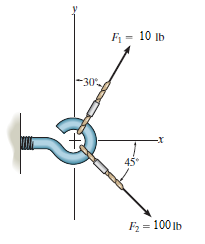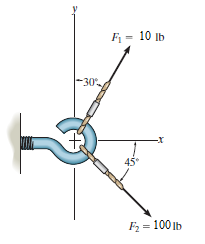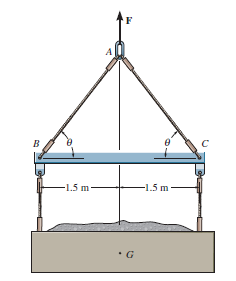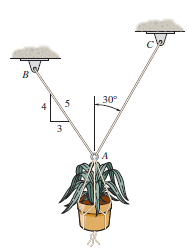Statics midterm #1
1/16
There's no tags or description
Looks like no tags are added yet.
Name | Mastery | Learn | Test | Matching | Spaced |
|---|
No study sessions yet.
17 Terms
A vector represents both magnitude and direction
True

Which side of the x axis will the resultant force pull into
the lower side below the x axis

Which side of the y axis will the resultant force pull into
the right side

The force in cable AB would be equal to the force in cable AC
True

To determine the magnitude of the vertical force in rope BA (Fy-ba) you should take its magnitude and multiply it by 3/5.
False
To vectors load a rigid body in the horizontal direction. One pushes to the right and one pushes to the left. They both have equal magnitudes. What will happen to the rigid body?
It will remain stationary
A cross product, used as the only calculation to derive an answer, will let you calculate the moment around an axis
False
If you push open your door to your house with just one finger, you are applying a force to the door and creating a moment about your finger?
False
A rocket is accelerating vertically into the atmosphere. Given these conditions the rocket body can be treated as a rigid body and a statics problem can analyze the forces operating on it?
False
Weight is an example of a mass.
False
A unit vector is…?
The ratio of the position vector divided by the position vectors magnitude
A moment arm direction is defined as (0i + 0j + 4k). It starts at the origin. A force's line of action contacts this moment arm at its end. Which of the following force vectors (they define the forces direction) are acceptable to use to develop a scalar (M=FD) calculation of the moment?
(2i+0j+8k)
(3i - 2j +4k)
(2i + 3j -0k)
(0i+2j-3k)
(2i + 3j -0k)
A dot product alone can be used to find the magnitude of a moment on a specific axis?
False
A cross product is used to calculate a moment given a moment arm vector and a force vector.
True
A triple product alone allows you to calculate the projection of a force onto another axis.
False
If the hypotenuse and adjacent leg of a triangle is known as well as the angle between them then which trig function can be used to calculate the opposite side?
Sin
According to out text, the force exerted by a spring through an attached rope to a weight, can be calculated if you know the magnitude of the change in length due to stretching in the spring ... by the following formula? Remember knowing a stretched length means you do not need to know initial and end points on the spring.
F=ks